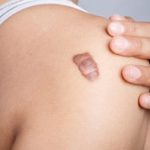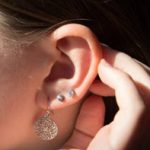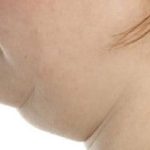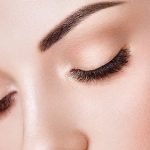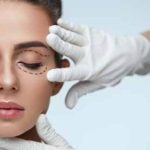What is a brow lift?
A brow lift is a cosmetic surgical procedure that repositions your forehead to raise the brow, reduce wrinkles and give you a more youthful appearance.
As you age, your skin loses elasticity. The accumulated effect of sun damage weakens skin and gravity pulls your brow down, which causes wrinkles. On your forehead, you may have “frown lines” between your eyebrows that make you look serious or angry. You may also develop horizontal lines. The outside of your brow may sag, which makes you look sad or tired because of drooping eyebrows. If you’re looking to correct these natural changes to your body, a brow lift might be right for you.
Other names for a brow lift are:
- Forehead lift.
- Forehead rejuvenation.
- Browplasty.
- Temporal brow lift (lateral brow lift).
What does a brow lift do?
A brow lift procedure corrects:
- Creases or wrinkles in your forehead, the horizontal lines across your forehead and on the bridge of your nose.
- Vertical frown lines between your eyebrows, also known as the “11s.”
- Sagging eyebrows (hooded eyes) to make your eyebrows look more youthful and awake.
Will a brow lift change my eye shape?
No, a brow lift won’t change the shape of your eyes or fix baggy eyelids. A brow lift will affect your eyebrows and forehead.
Who is a candidate for a brow lift?
You may be a candidate for a brow lift if you:
- Are physically healthy.
- Are a nonsmoker.
- Have realistic goals about the outcome of the surgery.
Your healthcare provider will go over your complete medical history and discuss your goals for the procedure to see if you’re a candidate for a brow lift.
 What are the types of brow lift procedures?
What are the types of brow lift procedures?
There are three different types of brow lift procedures:
- The classic lift, called an “open brow lift” or “coronal lift,” involves one continuous incision, from ear to ear across the top of your head. To correct a high forehead, your surgeon might recommend the incision follow your frontal hairline. If your hair is longer and will get in the way of the procedure, you may have to trim it. If your hair is shorter, you may want to grow it out to cover any scars.
- The endoscopic lift involves a few shorter incisions in your scalp. Your surgeon inserts a scope (a thin tube attached to a camera) into one of the incisions to view your tissues and muscles on a screen while using another device inserted in another incision to make the necessary alterations. In this procedure, your surgeon will adjust your tissue with either a temporary or permanent stitch or anchor below your scalp. These anchors are designed to keep your tissue in place. Because the incisions are smaller, this procedure is less invasive. You’ll experience minimal scarring and a shorter recovery time.
- The limited incision technique is a combination of the classic lift and the endoscopic lift. Your surgeon makes smaller incisions but they won’t use a scope. The procedure doesn’t correct the center of your forehead but it reduces wrinkles at the corners of your eyes (crow’s feet).
Your provider will discuss each type of brow lift procedure they recommend to meet your goals to help you choose what’s best.
Is there a nonsurgical brow lift?
A nonsurgical brow lift procedure uses Botox® (botulinum toxin) or another brand of injections to smooth out wrinkles on your forehead. Nonsurgical brow lift options are available if you want to improve your appearance, but prefer to avoid surgery, long recovery times and scarring. For the procedure, your provider will inject the medicine in between your eyebrows and at the corners of your eyebrows.
A brow lift such as this offers some of the same benefits as a surgical brow lift, including:
- Reduces wrinkles.
- Elevates the height of your eyebrows.
- Reshapes your eyebrows.
- Makes you look younger.
However, these injections aren’t permanent and you’ll need repeat treatments several times a year to keep your results.
What happens before a brow lift procedure?
Before your brow lift procedure, your healthcare provider will:
- Evaluate your forehead region.
- Have you make a variety of facial expressions to see all of your wrinkles and lines.
- Discuss your options for types of brow lift procedures to meet your goals.
- Examine your overall health.
- Take photographs of your brows and forehead.
- Discuss the outcomes, potential complications and risks of the surgery.
What should I do to prepare for a brow lift procedure?
Before your brow lift procedure, your surgeon will tell you everything you need to know before the surgery. Some of their preoperative instructions may include:
- Stop smoking at least six weeks before the surgery.
- Limit alcohol consumption.
- Avoid taking certain medicines like aspirin.
- Grow your hair out to cover your scars.
- Have a driver ready to take you home after your procedure.
- Have someone available to take care of you during your first night and day following surgery.
What happens during a brow lift procedure?
During your brow lift procedure, you’ll receive anesthesia so you won’t feel any pain. Depending on the type of brow lift procedure, you could receive either local anesthesia to numb the area of your forehead where your provider will perform the procedure or general anesthesia that puts you to sleep.
Once the anesthetic kicks in, your surgeon will cut into your skin at your hairline. They’ll move your tissue and remove segments of muscles and skin that cause wrinkles or deep frown lines.
Your surgeon will close the incisions with stitches or staples. They’ll wrap your surgical site with padding and bandages to protect your stitches.
A brow lift surgery can take between one to three hours.
What happens after a brow lift procedure?
After your brow lift procedure, you’ll go into a recovery area until you wake up from the anesthetic or where you’ll wait for a short amount of time to make sure there aren’t any complications. Once your provider says that it’s OK, you may go home. You’ll need someone to take you home, as you won’t be able to operate a vehicle safely after your surgery.
Your surgeon will give you instructions on how you should take care of yourself after your brow lift procedure, which could include:
- How to manage your surgical site.
- What medications or over-the-counter pain relievers to use to ease pain or soreness as you heal.
- How to reduce swelling, like keeping your head elevated or using cool packs around your surgical site as instructed (not directly on top of your forehead).
- How long you should rest and avoid physical activities.
Your surgeon will let you know what you should look out for if there are any complications as you heal. They’ll also schedule a follow-up appointment to make sure your body is healing as it should
What are the advantages of a brow lift procedure?
Advantages of getting a brow lift include:
- Improve the appearance of your forehead and, ultimately, your entire face.
- Raise your eyebrows to make you look younger and more awake.
- Remove wrinkles and excess, droopy skin from your forehead.
- Minimize the tired and angry look on your face.
What are the risks or complications of a brow lift procedure?
There are potential risks with any type of surgery, including a brow lift. Possible complications from a brow lift surgery could include:
- Scarring.
- Infection.
- Limited movement of your eyebrows.
- Intense scalp itchiness.
- Bad reaction to anesthesia.
- Pain.
- Hair follicle loss around the incisions.
- Asymmetry.
- Numbness.
- Bleeding.
BROW LIFT SURGERY RECOVERY AND POST-CARE
You may feel uncomfortable or notice a feeling of tightness in your forehead after the surgery. For some two weeks following the surgery, you have swelling and bruising in the surgical sites.
Depending on whether you have a brow lift alone or in conjunction with other procedures (such as facelift or eyelid surgery). A recovery timeline for a typical eyebrow lift is as follows:
- Surgery day: it is recommended to walk around the house.
- 1-2 days after surgery: showering is allowed but you must be gentle with the incision sites.
- 1 week after surgery: you can return to work on the condition it doesn’t require strenuous physical activity. Some people can resume work earlier. If you’re worried about visible bruising, camouflage makeup can be a good idea to make it less visible.
- 1-2 weeks after brow lift: you can resume driving if you don’t take pain medications that affect your driving ability.
- 2 weeks to 1 month after surgery: you can gradually resume exercises with the approval of your surgeon.







